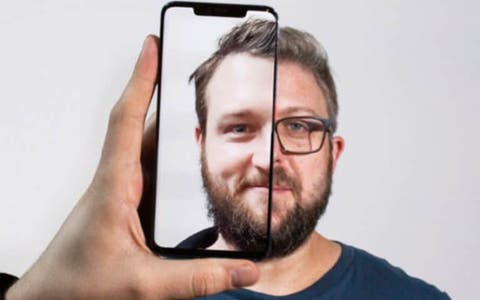The 3D facial recognition system of the Huawei Mate 20 Pro has been deceived by the faces of two of our colleagues from AndroidPit, who share some features of resemblance. Presented as an alternative as secure as Apple’s Face ID, is Huawei’s technology really up to date?
As the picture above shows, the two men have a certain resemblance: they are bearded, have short hair, a rounded face and almond eyes. They are not twins, says the journalist, referring to the face ID of the iPhone X, fooled by two twin brothers.
Is 3D facial recognition of the Huawei Mate 20 Pro less secure than Apple’s Face ID?
Similarly, it is not a passing bug. To make sure, our colleague even deleted his profile of the facial recognition application. He then reconfigured his face from A to Z. The Huawei Mate 20 Pro always unlocks when it sees the face of his colleague. Moreover, the smartphone works without any problem, says the reporter.
As a reminder, this kind of problem is common with 2D face recognition systems. Fully software, they are based on general physical characteristics. In these conditions, some users managed to trick the Face Unlock of the OnePlus 6 with a simple photo. Same story on Samsung smartphones. The facial recognition of the Galaxy Note 8 can be deceived by a selfie displayed on the screen of another smartphone. Manufacturers also readily recognize that 2D face recognition is not as secure as a fingerprint sensor. It is not possible to use it to make a purchase.
A 3D facial recognition system, like the Mate 20 Pro, the Oppo Find X or iPhone XS, is more secure. To scan your face, 3D sensors compare thousands of recognition points in a thousandth of a second. To work, the Mate 20 Pro’s sensors compare 30,000 points on the face, like the iPhone X and XS. That’s more than Oppo Find X’s O-Face technology , which scans only 15,000 points of the face. In theory, Huawei’s technology is similar to that of Apple.
It should be remembered that the Huawei Mate 20 Pro is not yet released on the market. By October 26, 2018, the Chinese manufacturer still has time to deploy software updates to fill the various bugs encountered by the testers. Likewise, it is only an isolated case. 3D sensors could for example suffer from a manufacturing defect. We’ll know more when Huawei release the phone officially. To conclude, it will be recalled that the smartphone is also equipped with a fingerprint sensor under the screen. Is this proof that 3D facial recognition is not enough on its own?
